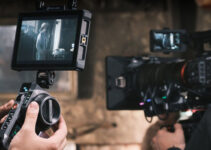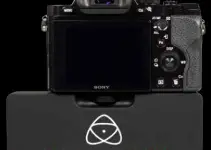Sometimes I wish there were a clear, definite winner in the battle over who can make the best camera; Canon and Sony have been trying to outdo one another for a very long time now – making fantastic cameras that all had their own positives and negatives but rarely many equivalents. The color sciences don’t match up. They use different lens mount and lenses. Their cameras take different media drives, with different file formats.
You would think that two companies that are headquartered just a short 32-minute drive from one another in Tokyo would be on the same page, wouldn’t you? But sadly, no. Canon is Canon and Sony is Sony. The two will always be just a little different.
Potato Jet has put two of their most similar cameras, the Canon C300 Mark III and the Sony FX9, side by side to help you determine which of these feature heavy, powerful, convenient, and smart cameras might be best for you and your work.
Thought they might have their subtle differences, Canon and Sony are both going after the exact same market, and with a price difference of literally just $1, it’s going to be hard to figure out which on is really the best.
Canon C300 III Key Features
- Super 35mm Dual Gain Output (DGO) Sensor
- 4K 120p, 2K Crop 180p HDR
- Cinema RAW Light and XF-AVC H.264 Codec
- EF Lens Mount, DIG!C DV7 Image Processor
- Dual Pixel CMOS AF and Face Detection
- LM-V2 4.3″ LCD Touchscreen Monitor
- 12G-SDI and 4-Channel Audio Recording
- 2 x CFexpress Slots, Canon Log2 and 3
- Electronic Image Stabilization
- Proxy Recording, Anamorphic Lens Support
- Price: $10,999
Sony FX9 Key Features
- 6K Full-Frame Exmor R CMOS Sensor
- 15 Stops of Dynamic Range
- UHD 4K (3840 x 2160) up to 59.94p
- HD Recording up to 120 fps
- Sony E-Mount
- 10-Bit 4:2:2 XAVC-I up to 600 Mb/s
- Auto-HD and 7-Stop ND Filter
- Dual Base ISO of 800/4000
- Dual XQD Memory Card Slots
- 12G/3G-SDI & HDMI Output
- Price: $10,998
The biggest difference between the Canon C300 Mark III and the Sony FX9 is the sensor size. Canon has outfitted the C300III with a Super 35mm image sensor whereas Sony went big with a full-frame imager. This makes it a little tricky to do a side-by-side, but Potato Jet has done his best to zoom-to-match in this comparison.
Highlights and Shadows
When properly exposed, both of these cameras output an amazing image that is more than useable in any professional setting, but the story changes a little when we overexpose our shots.
At 3+ stops overexposed, both cameras do a pretty good job at allowing you to recover the image in post but you can see there is still some clipping in the highlights of the C300 Mark III. The FX9, on the other hand, almost looks better slightly overexposed than it did when properly exposed.
When things are pushed up to 5+ over, neither camera has an image that is pleasing when recovered in post but it is obvious how much more detail the FX9 retains in the highlights of the image. All of that changes, however, when look stop things down.
Frankly, it’s fascinating how much information the Canon C300 III is able to retain in the shadows of the image. The FX9 is nearly unusable at just -2 stops but C300 III’s footage recovers perfectly.
At -4 stops things get even worse for Sony, but Canon is still holding strong.
There are two reasons is occurring. One, Potato Jet is recording on both cameras at their highest internal codec, which means the C300 III is shooting in Raw.
And two, the C300 III uses a DGO (Dual Gain Output) Sensor that uses two separate sets of circuits to process the highlights and lowlights of the image independently and then combine them together into one image with more dynamic range.
When we compare them to their native compressed codecs at off exposures, both are pretty bad.
It is always best to shoot with the camera with the most recoverable image. When you’re on the move, things are happening quickly and mistakes occur, but the true mark of professionalism is consistency in your final output.
Sharpness
There is no question that Sony bests Canon in sharpness with the FX9. The FX9 downsamples from a 6K sensor to output it’s crystal clear 4K image, and the clarity is very apparent when zoomed in to 500x.
Ergonomics, Physical Size, and Layout
It’s obvious from just looking at pictures of it that the FX9 is a fairly long camera. It’s shape and design are fantastic for shoulder mounting. With its built-in shoulder rest and extension side handle, you can shoot all day without any worries. However, you’re going to run into issues packing it, carrying it, and mounting it to a gimbal.
The C300 III has a perfectly designed, small, ergonomic body that makes holding it in your hand as comfortable as mounting it to a gimbal, and packing it to take with you anywhere in the world.
Both cameras present the camera operator with ample buttons on the left side of the camera to access controls quickly and are user customizable, but Canon’s are much more clearly labeled and easier to locate quickly.
Sony’s layout is rather jarring at first and finding the settings your need isn’t as intuitive. Canon has clearly spent a lot more time crafting their user interface – not just externally, but in the menu system as well.
Canon’s menus are always clear and easy to navigate, but Sony has historically unpleasant menu structures for all of their cameras.
Other Features:
- Built-In NDs
- Having built-in NDs in any camera is a game changer, and it’s something that has become standard in all-in-one rigs like these. The C300 III has selectable 2, 4, 6, 8, and 10 stops of ND to the FX9’s 2-7 stop electronic, variable ND filter. I really like the ability to precisely dial in an exact ND on the FX9, but 7 stops fails a little too short of the mark if you’re intending to shoot at a wide open f-stop on a sunny day.
- Slow Motion
- The FX9 Features high speed frame rates of up to 60p in 4K.
- The C300 III captures 4K at up to 120fps, and still has the ability to use DPAF at its top speed.
- Image Stabilization
- Both cameras feature Electronic Image Stabilization (EIS) but the FX9 allows you to record that information as metadata on the clip and apply that stabilization in post – allowing you to tweak it to your liking.
- The C300III’s EIS is all in-camera and isn’t adjustable in post.
- Raw Recording
- The C300 III records raw in Canon’s Cinema Raw Light codec internally.
- A future firmware update will unlock 16-bit external raw recording on the FX9.
- Sensor Windowing
- The C300 III doesn’t allow you to window the image sensor.
- Sony’s FX9 can shoot in full frame or Super 35 mode, giving you more reach with your lenses.
With so many fantastic features, it’s really tough to call out a winner between these two cameras. Both will serve whoever shoots with them well, and add to your cinematic compositions stand out like never before. They’re both the next iteration of their older siblings, the C300II and the FS7, which were tremendously popular with camera operators, rental houses, and production companies all over the world.
You can’t go wrong with either of these cameras, but unfortunately, there is just no clear winner between the two. I started this out by saying that I wish there was a clear winner, but how boring would the world be if things were so cut and dry?
[source: Potato Jet]
B&H Order Links:
Canon EOS C300 Mark III Digital Cinema Camera Body
Sony PXW-FX9 XDCAM 6K Full-Frame Camera System
Disclaimer: As an Amazon Associate partner and participant in B&H and Adorama Affiliate programmes, we earn a small comission from each purchase made through the affiliate links listed above at no additional cost to you.



